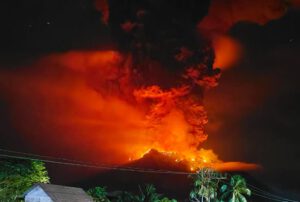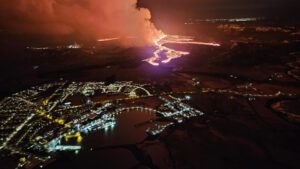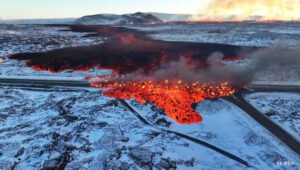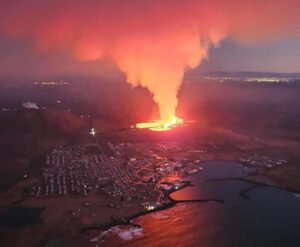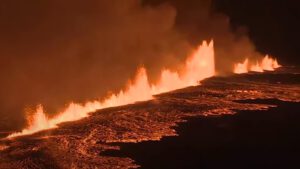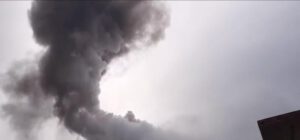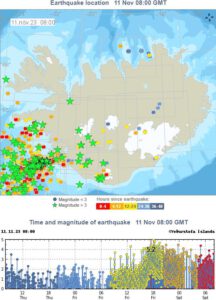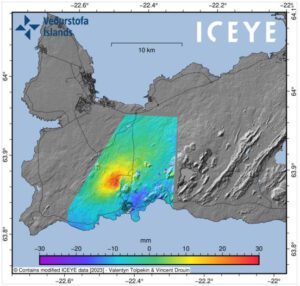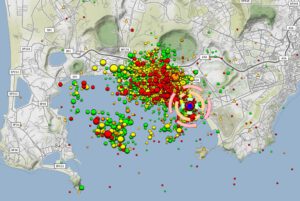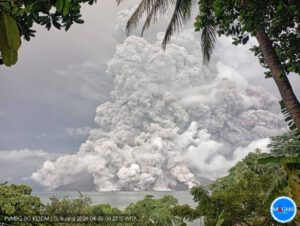 Strong explosions shook the Indonesian volcano Ruang, resulting in pyroclastic flows and volcanic thunderstorms. An ash cloud reached a height of 19 kilometers and spread southwestward, even reaching Sulawesi, where the International Airport of Manado had to be closed. Strong volcanic thunderstorms accompanied the eruption clouds, accompanied by thousands of lightning strikes. Pyroclastic flows flowed down the volcano in all directions, reaching the sea. Footage showed burning houses on the island, which had already been evacuated. It is unclear if there were any casualties.
Strong explosions shook the Indonesian volcano Ruang, resulting in pyroclastic flows and volcanic thunderstorms. An ash cloud reached a height of 19 kilometers and spread southwestward, even reaching Sulawesi, where the International Airport of Manado had to be closed. Strong volcanic thunderstorms accompanied the eruption clouds, accompanied by thousands of lightning strikes. Pyroclastic flows flowed down the volcano in all directions, reaching the sea. Footage showed burning houses on the island, which had already been evacuated. It is unclear if there were any casualties.
The warning time was short, with a rapid increase in volcano-tectonic earthquakes the day before the eruption. The earthquakes began at depth and shifted towards the surface with ascending magma. A exclusion zone with a radius of 7 kilometers was established around the crater. The main explosions generated seismic signals with a maximum amplitude of 55 mm and durations of 360 and 600 seconds. The alert status is “Red”.
